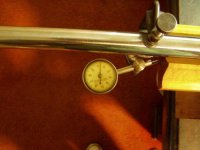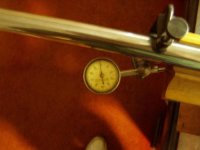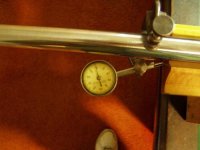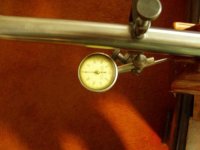I am not sure that you guys get what is being tested for, and why it should be done in the vertical position.
Somewhere in my workshop, I have a much smaller and lighter attachment for a dial indicator than the massive one I tried using. Problem is, ... I have to find it!





